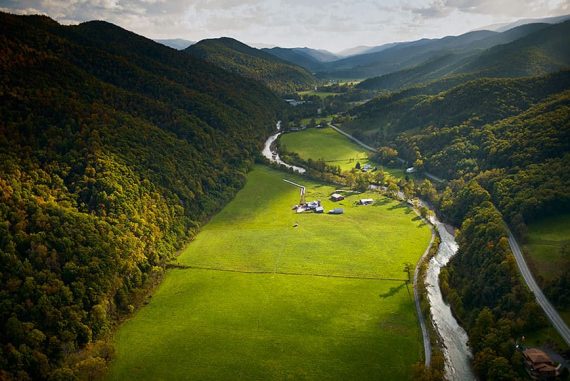Aerial & Aviation Photographers
Ever wanted to learn about aerial and aviation photography? How about getting a peek inside the camera bags of professionals to see what gear they use?
Aerial photography and aviation photography are two different genres linked by a common thread: they both involve flight.
Aerial photography is about capturing unique, birds-eye perspectives.
It’s incredible how different things look from above. Rivers become veins in a great, green body. Fields become patchwork quilts and cities sprawling grids.
Traditionally, aerial photographers would need to fly up in a plane or helicopter to get the best shots, but these days drones can be used as well. Thanks to drones, aerial photography is now much more accessible. Drones can also go places where larger aircraft cannot.
So what’s the appeal of aerial photography?
Firstly, you have the potential to capture breathtaking photos of landscapes or abstract patterns that are only visible from above. These types of shots frequently end up on gallery walls and in books as fine art.
Don’t be mistaken though – it’s also a highly functional genre. Aerial photographers might be commissioned to take photos for cartography and topographical mapping. They might be employed on film sets, archaeological digs, real estate development projects or assessments of environmental sites.
Being able to view, map out and evaluate locations from above provides many advantages.
Aviation photography is a different genre, though there is some overlap. Aviation photography focuses on the act of flight and the aircraft itself.
Sometimes this means that both subject and photographer need to be in the air in order to get the shot (called air-to-air photography). Other times, the photographer can remain on the ground. Think photos of planes in flight: that’s aviation photography at work.
Both aerial and aviation photography require some skills, equipment and planning to be done professionally.
For drone photography, you’ll need to know regulations in your area and apply for any necessary permits and permissions for flying your drone (and your drone equipment, of course!).
While drones are the cheaper option for aerial photography, many photographers still prefer to get up in the air and feel the click of the shutter beneath their finger. Some of Shotkit’s featured aerial photographers are licensed pilots or simply find too much joy in flying to switch to a drone.
Because getting up in an aircraft can be expensive, you’ll want quality camera gear to make the trips worthwhile. Lenses will depend on what you’re shooting, but generally speaking a zoom lens will make life easier than having to switch between primes.
You’ll also notice a gyro stabiliser in some photographers’ kits. If shooting from a helicopter, a gyro can help with the vibrations.
As for aviation photography, the easiest type is ground-static – i.e, photographing an aircraft while it’s grounded. Equipment will depend on whether you’re taking wide shots or details.
For photographing things like airshows or “plane spotting” from the ground, you’ll probably want a decent telephoto lens: something quick to focus that can lock onto a moving subject.
The most challenging form of aviation photography is air-to-air. To get into this genre takes some research and experience – especially if you want to shoot military aircraft which fly at ultra-high speeds.
A good place to start is reading about how others carved their pathway into an aviation photography career and seeing what gear they use. From there, you can take your own first steps.









